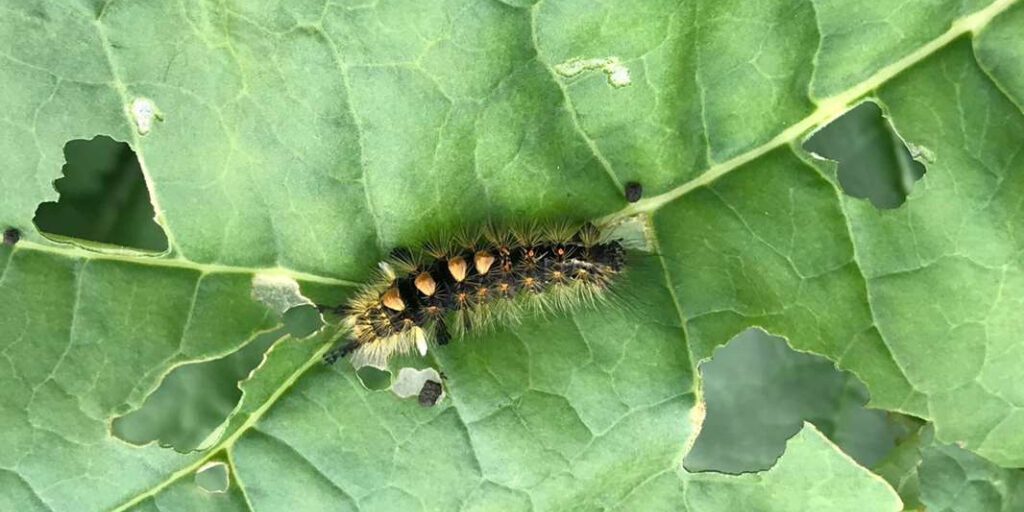Large populations of caterpillars have been observed in the Nome area this month, and experts have identified them as rusty tussock moths. A high concentration of this type of caterpillars is uncommon for this part of the state.
According to Jessie Moan with the University of Alaska–Fairbanks’ Cooperative Extension Service, these caterpillars are known to “feed on a variety of trees and shrubs and can defoliate large areas when populations are high. Their populations can vary from year to year, depending on the weather.”
Rick Thoman, a climate specialist with UAF’s Alaska Center for Climate Assessment and Policy, says temperatures in Nome and Western Alaska have been warmer than usual so far.
“Especially mid-June to mid-July; (that) was far above normal. And even since then, although we’ve had more wind off the ocean — so somewhat cooler temperatures — for the most part, it’s been pretty mild, as well. Most days (are) still near or above normal, but overall, Nome, like the rest of Alaska, is having a warm summer coming on the heels of a warm spring.”
Tammy Davis, the invasive species program coordinator for Fish & Game, confirms that the department received a couple reports of tussock moth caterpillars earlier in July during a time when Nome was experiencing a heatwave. However, she could not give more details about the invasive insect, as she mostly deals with fish species.
Davis referred KNOM to Dr. Stephen Burr with the U.S. Forest Service, an expert on rusty tussock moth caterpillars. But Burr was unavailable for comment before the airing of this story.
According to previous reports, one characteristic of the moth caterpillar is they can cause dermatitis, a type of skin irritation, if people touch the hairs of the caterpillars.
If you observe populations of these caterpillars in your community, please call the Invasive Species Hotline at 1-877-INVASIV (1-877-468-2748).
Image at top: A tussock moth caterpillar. Photo: Anahma Shannon, via the LEO Network (2019).




